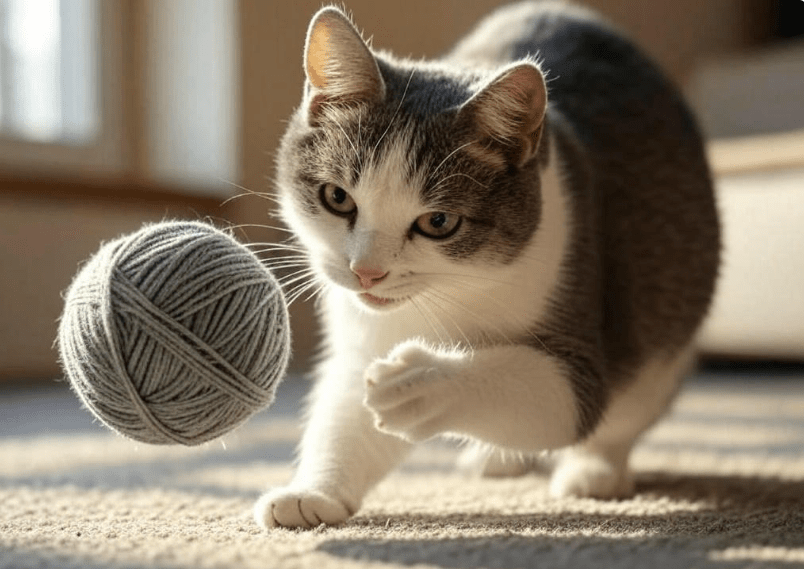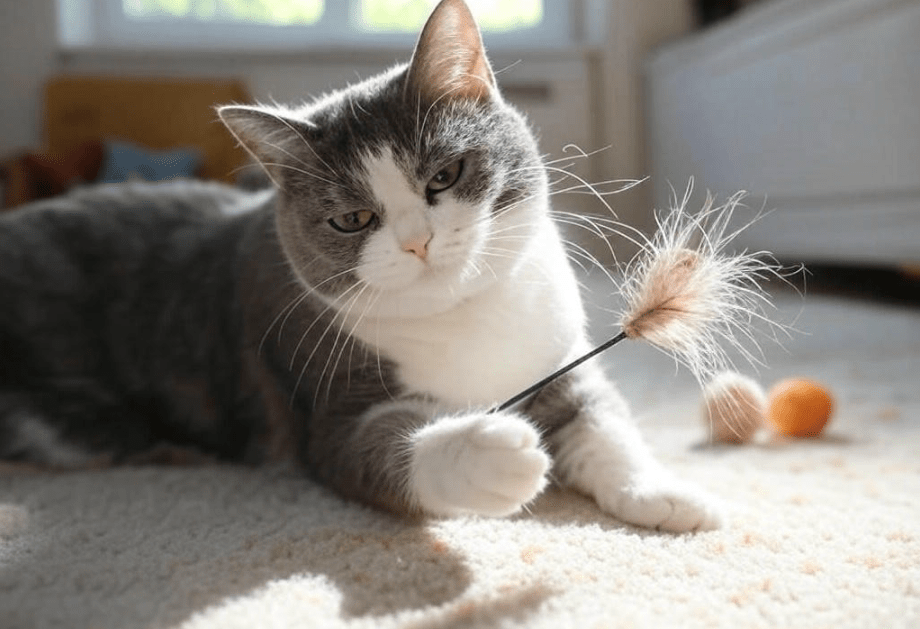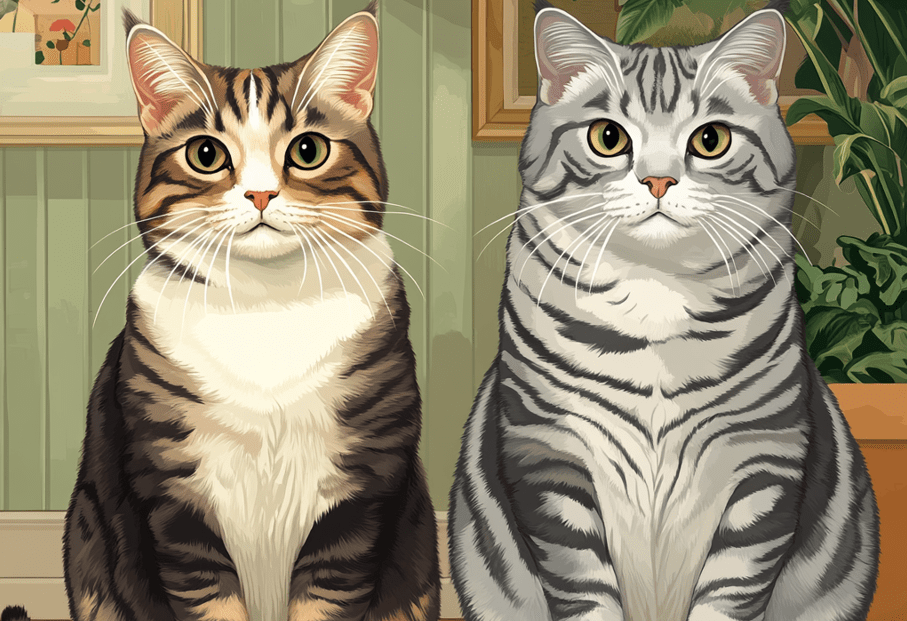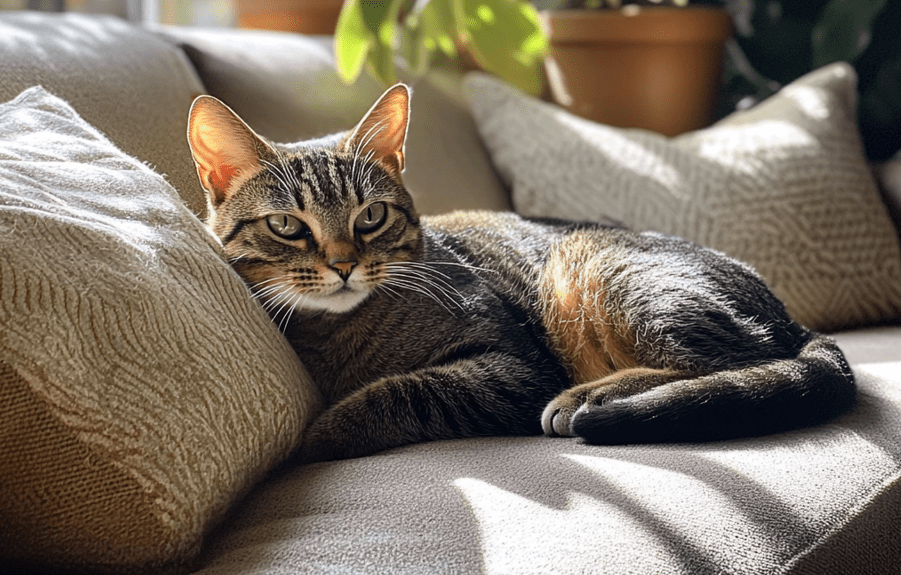
Domestic Shorthairs are curious, playful cats that often crave outdoor adventures, but the outside world can pose risks for them. Creating a safe outdoor space for your Domestic Shorthair allows them to enjoy fresh air and exercise while staying protected from dangers like traffic, predators, and toxic plants. This comprehensive guide will walk you through the steps to design a secure, stimulating outdoor environment for your feline friend, ensuring they thrive while exploring the outdoors safely.
Why Domestic Shorthairs Need a Safe Outdoor Space
Domestic Shorthairs, known for their short, dense coats and diverse patterns, are often energetic and inquisitive. While they may be content indoors, many of these cats benefit from outdoor time to satisfy their natural instincts to explore, hunt, and bask in the sun. However, letting them roam freely can expose them to hazards like cars, other animals, or getting lost. A safe outdoor space offers a controlled environment where they can enjoy the benefits of nature without the risks.
Benefits of an Outdoor Space for Your Cat
Physical Exercise: Outdoor spaces allow your Domestic Shorthair to run, climb, and play, keeping them physically active and healthy.
Mental Stimulation: Exploring new sights, sounds, and smells helps reduce boredom and stress, preventing behavioral issues like scratching or aggression.
Vitamin D Exposure: Sunlight helps your cat produce vitamin D, which supports their overall health.
Improved Well-Being: Access to fresh air and natural surroundings can enhance your cat’s mood and quality of life.
Potential Dangers of the Outdoors for Domestic Shorthairs

Before creating an outdoor space, it’s important to understand the risks that Domestic Shorthairs face outside:
Traffic and Roads: Cats can be hit by cars if they wander too far.
Predators: Dogs, foxes, or birds of prey may pose a threat.
Toxic Plants and Substances: Plants like lilies or antifreeze can be deadly if ingested.
Fights and Injuries: Encounters with other cats can lead to fights, abscesses, or diseases like FIV (Feline Immunodeficiency Virus).
Getting Lost: Domestic Shorthairs may stray too far and struggle to find their way home.
A well-designed outdoor space mitigates these risks while allowing your cat to enjoy the outdoors safely.
Steps to Create a Safe Outdoor Space for Your Domestic Shorthair
Here’s a step-by-step guide to building a secure and enriching outdoor environment for your cat.
1. Assess Your Available Space
Start by evaluating the outdoor area you have, whether it’s a backyard, balcony, or patio. Consider the size, layout, and potential hazards (like gaps in fences or nearby roads). Even a small space can be transformed into a cat-friendly oasis with the right setup.
2. Build a Secure Enclosure (Catio)
A catio (cat patio) is a fully enclosed outdoor space designed specifically for cats. It’s one of the best ways to ensure your Domestic Shorthair stays safe while enjoying the outdoors.
How to Build a Catio
Choose a Location: Pick a spot with some shade and shelter from wind or rain.
Use Sturdy Materials: Opt for weather-resistant materials like wood, wire mesh, or PVC piping for the frame and enclosure.
Ensure Full Enclosure: The catio should be fully enclosed, including the top, to prevent escapes or predator attacks. Use fine mesh or netting to keep out insects and small animals.
Add Access Points: Install a cat door or tunnel connecting the catio to your home, allowing your cat to come and go safely.
Catio Features to Include
Perches and Shelves: Cats love vertical space. Add shelves or perches for climbing and lounging.
Scratching Posts: Include scratching surfaces to satisfy your cat’s natural instincts.
Hiding Spots: Provide small boxes or tunnels where your cat can retreat if they feel overwhelmed.
Toys and Enrichment: Hang toys or add a cat-safe grass patch for nibbling.
3. Secure an Existing Yard
If a catio isn’t feasible, you can cat-proof your yard to create a safe outdoor space.
Fencing Solutions
Install Cat-Proof Fencing: Use tall fencing (at least 6 feet high) with an inward-angled top or roller system (like Oscillot or Purrfect Fence) to prevent your cat from climbing over.
Check for Gaps: Fill in any holes or gaps in the fence where your cat could escape.
Bury the Base: Dig a trench and bury the bottom of the fence to prevent digging.
Remove Hazards
Clear Toxic Plants: Remove or fence off plants like lilies, azaleas, or rhododendrons, which are toxic to cats.
Secure Chemicals: Store pesticides, fertilizers, or antifreeze out of reach.
Cover Water Features: If you have a pond or pool, cover it or add a ramp so your cat can escape if they fall in.
4. Provide Shelter and Comfort
Your Domestic Shorthair will need a comfortable space to relax and stay safe from the elements.
Add Shade and Shelter: Include a shaded area or a small cat house to protect your cat from sun, rain, or wind.
Include a Litter Box: If your cat will spend extended time outside, place a litter box in the space.
Offer Fresh Water: Always provide a bowl of fresh water to keep your cat hydrated.
5. Supervise Initial Visits
When introducing your Domestic Shorthair to their new outdoor space, supervise them closely at first. Watch for signs of stress or attempts to escape, and make adjustments as needed.
6. Use a Harness and Leash (Optional)
If an enclosed space isn’t possible, you can train your Domestic Shorthair to use a harness and leash for supervised outdoor time. Start with short sessions in a quiet area, gradually increasing the duration as your cat becomes comfortable.
Enrichment Ideas for Your Domestic Shorthair’s Outdoor Space

To make the outdoor space engaging, incorporate elements that stimulate your cat’s senses and instincts.
Plant Cat-Safe Grass: Grow catnip, wheatgrass, or cat grass for your cat to nibble on.
Install a Bird Feeder (Outside the Enclosure): Place a bird feeder where your cat can watch but not reach, providing visual stimulation.
Add Climbing Structures: Use logs, tree stumps, or cat trees for climbing and scratching.
Create a Digging Area: Fill a small sandbox with soil or sand for your cat to dig in.
Rotate Toys: Keep the space interesting by rotating toys like feather wands, balls, or puzzle feeders.
Safety Tips for Your Domestic Shorthair Outdoors
Even in a secure space, there are additional precautions to ensure your cat’s safety.
Microchip and ID Tag: Ensure your Domestic Shorthair has a microchip and wears a collar with an ID tag, just in case they escape.
Spay or Neuter: If your cat isn’t already spayed or neutered, do so to reduce the urge to roam and prevent unwanted litters.
Apply Flea and Tick Prevention: Use vet-recommended flea and tick treatments to protect your cat from parasites.
Monitor Weather Conditions: Avoid letting your cat out during extreme heat, cold, or storms.
Check for Wear and Tear: Regularly inspect the outdoor space for damaged netting, loose screws, or other hazards.
Benefits of a Safe Outdoor Space for Domestic Shorthairs
A well-designed outdoor space offers numerous benefits for both you and your cat.
Reduced Stress for You: Knowing your cat is safe allows you to relax while they enjoy the outdoors.
Healthier Cat: Outdoor time promotes physical activity and mental well-being, reducing the risk of obesity and boredom-related behaviors.
Stronger Bond: Spending time with your cat in their outdoor space can strengthen your bond through play and interaction.
Common Mistakes to Avoid
When creating a safe outdoor space, avoid these pitfalls:
Underestimating Escape Risks: Domestic Shorthairs are skilled climbers and jumpers. Don’t assume a standard fence will keep them contained.
Ignoring Toxic Plants: Always double-check the plants in your yard for toxicity.
Skipping Supervision: Always supervise your cat during their first few visits to the space to ensure it’s secure.
Neglecting Maintenance: Regularly check the enclosure for damage, especially after storms or heavy winds.
Alternative Options for Small Spaces
If you live in an apartment or have limited outdoor space, you can still create a safe environment for your Domestic Shorthair.
Window Perches: Install a window perch or cat shelf where your cat can watch the outdoors safely.
Screened Balcony: Screen in a balcony with pet-safe netting to create a mini outdoor space.
Portable Catio: Use a portable catio or pop-up tent for temporary outdoor time.
How to Train Your Domestic Shorthair to Use the Outdoor Space
Some cats may be hesitant to explore their new outdoor space. Here’s how to help them adjust:
Introduce Gradually: Start with short visits, staying with your cat to provide reassurance.
Use Positive Reinforcement: Reward your cat with treats or praise when they explore the space.
Add Familiar Items: Place a familiar blanket or toy in the space to make it feel safe.
Be Patient: Every cat adjusts at their own pace. Don’t force them if they seem stressed.
Conclusion

Creating a safe outdoor space for your Domestic Shorthair is a rewarding way to enhance their quality of life while keeping them protected from outdoor dangers. Whether you build a catio, cat-proof your yard, or set up a small balcony space, the key is to prioritize safety, comfort, and enrichment. By following the steps and tips in this guide, you can provide your Domestic Shorthair with a secure, stimulating environment where they can enjoy the outdoors without the risks. With a little effort, you’ll give your feline friend the best of both worlds—safety and adventure.




